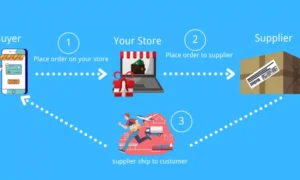The biggest problem plaguing B2B marketing today isn’t a lack of data; it’s what happens after the data is collected. While marketing teams generate endless reports filled with MQLs, SQLs, and platform metrics, most organizations are fundamentally broken when it comes to understanding what actually drives revenue.
“The core problems that exist in B2B marketing are that you have a long buying cycle, and most people actually aren’t doing a very good job of tracking the contact origin,” explains Justin Rashidi, co-founder of SeedX. “Once a deal closes, they’re not actually going back to campaigns and updating campaigns.”
This disconnect creates a dangerous cycle where marketers optimize campaigns based on incomplete or misleading data. A campaign might show poor performance in LinkedIn or Google analytics, but when you track it through the entire customer journey, it could be your best performer. Without proper attribution, teams make decisions in the dark.
The Real Attribution Problem
The issue goes deeper than tracking; it’s about organizational alignment. The most successful B2B companies Justin works with have seamless marketing and sales integration, while the worst performers operate in silos. “Usually when one sales team is using Salesforce and the marketing team is using HubSpot and they don’t like each other, that is probably the number one reason that it breaks down.”
This technological and cultural divide creates attribution chaos. Marketing claims credit for leads that sales considers unqualified, while sales teams close deals without properly crediting the marketing touchpoints that made it possible. The result? Both teams optimize for the wrong metrics.
The Data-Driven Myth
Being “data-driven” has become a buzzword that masks a deeper problem. Most teams can report KPIs, but they struggle with the crucial next step. “To me, being data-driven is actually being able to take what’s happening and translate it into actionable goals and next steps,” Justin notes. “Companies, while they can report the KPIs, often lack the ability to take that next step.”
The challenge is particularly acute because B2B teams become paralyzed by inflated metrics. “Just because you’re getting a low-cost MQL or a high-cost MQL, it doesn’t necessarily mean that those people are going to convert,” Justin points out.
The Solution: Pipeline-First Attribution
The fix isn’t more sophisticated tracking tools, it’s simpler, more aligned processes that prioritize business outcomes over platform metrics. “Simple metrics actually scale,” Justin emphasizes. “If it’s overly complex, usually it’s unnecessary and people can’t make decisions off of it.”
Start with these fundamentals:
Unify your data systems. If marketing and sales use different platforms, create bridges that ensure every touchpoint is captured and shared. The handoff between systems is usually where attribution breaks down. “The biggest problem I generally see is the expectation of what’s a marketing task and what’s a sales task, and who should be executing which task and at what time.”
Focus on pipeline metrics that matter. Instead of optimizing for platform-reported metrics, track the full journey from first touch to closed deal. Track new customers acquired, cost per acquisition, and the percentage of revenue attributed to marketing spend.
Create feedback loops. When deals close, ensure that data flows back to the original campaigns. This closed-loop reporting is essential for understanding true campaign performance.
Align on expectations. Marketing and sales teams need clear agreements on lead definitions, follow-up responsibilities, and success metrics. Most importantly, both teams must view marketing as an investment rather than an expense. “There are two ways that you can view marketing expenses. One is an expense, and the other it’s an investment. The more intelligent way of thinking about it is obviously as an investment.”
The companies that solve attribution don’t just get better data, they build better businesses. When marketing and sales teams share unified metrics and common goals, they stop pointing fingers and start driving growth together.


































